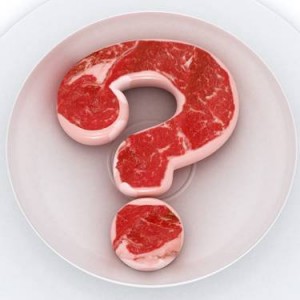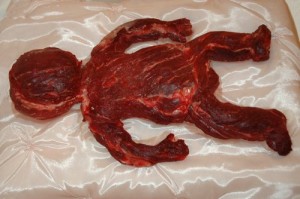A few months ago Could This Happen explored the potential of Star Trekian replicators and 3-D printers. In addition to printing solid objects, like busts of Arthur C. Clarke, projects are underway to print skin and cartilage, as well as pastries.
Peter Thiel, CEO of Paypal, founder of the philanthropic Thiel Foundation, and supporter of the Singularity Institute, is financially backing Modern Meadow, a start-up that aims to 3-D print meat.
Various laboratories around the world are working on lab-grown or in-vitro meat production. In addition to simply being able to achieve the task, the growing concern over the environmental implications of producing meat motivates scientists to figure out how to achieve the process artificially. The livestock industry accounts for almost 20% of global greenhouse-gas emissions, and nearly 70% of land suitable for farming is devoted to the production of meat.
Making meat in a lab, which essentially involves delivering consistent electrical stimulation to skeletal cells growing in a petri dish until they become muscles, is in its early phase. This process would virtually eliminate land use for meat production, use significantly less energy, and would cut down greenhouse gas emission by more than 75%.
Lab-raised meat may be tough to swallow. Even if scientists are able to physically perform the task, who knows how it will taste, and people who stick to Kosher or Halal meats might have some objections. Even if filet mignon birthed from a beaker doesn’t make the grade quite yet, there are other more savory options, such as this 3-D burrito bot.
Right now, food produced in a lab has a much higher price tag than what we see in the supermarkets, but if the price of food continues to skyrocket, that might change. It’s good to know that if we run out of farm land or if new emissions laws are passed, there’s an alternative to astronaut food. At least steak grown in a petri dish won’t be served in a tube.
And who knows what else they’ll decide to replicate, especially with grants from philanthropic futurists.


